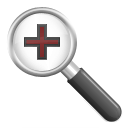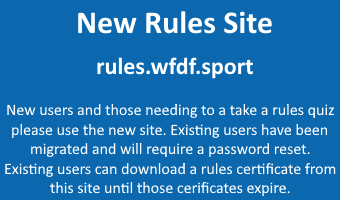-
13.1. A turnover that transfers possession of the disc from one team to the other occurs when:
-
13.1.1. the disc contacts the ground while it is not in the possession of an offensive player (a “down”);

-
13.1.1.1. however it is not “down” if a receiver catches a pass before the disc contacts the ground, and maintains the catch while the disc is in contact with the ground.

-
13.1.2. a defensive player establishes possession of a pass (an “interception”);

-
13.1.3. the disc becomes out-of-bounds (an “out-of-bounds” or "out"); or
-
13.1.4. during the pull, the offence touches the disc before it hits the ground, and subsequently fails to establish possession of the disc (a “dropped pull”).

-
13.2. A turnover that transfers possession of the disc from one team to the other, and results in a stoppage of play, occurs when:
-
13.2.1. there is an accepted offensive receiving foul;
-
13.2.2. the thrower has not released the disc before the marker first starts to say the word “ten” in the stall count (a “stall-out”);
-
13.2.3. the disc is intentionally transferred from one offensive player to another without ever being completely untouched by both players (a “hand-over”);
-
13.2.4. the thrower intentionally deflects a pass to themselves off another player (a “deflection”);
-
13.2.5. in attempting a pass, the thrower catches the disc after release prior to the disc being contacted by another player (a “self-catch”);

-
13.2.6. an offensive player intentionally assists a team-mate’s movement to catch a pass; or

-
13.2.7. an offensive player uses an item of equipment or object to assist in catching a pass.
-
13.3. If a player determines a turnover has occurred they must make the appropriate call immediately. If the opposition disagrees they may call "contest" and play must stop. If, after discussion, players cannot agree or it is unclear what occurred in the play, the disc must be returned to the last non-disputed thrower.
-
13.4. After a “stall-out” call:


- 13.4.1. If the thrower still has possession of the disc, but they believe a fast count occurred in such a manner that they did not have a reasonable opportunity to call fast count before a stall-out, the play is treated as either an accepted defensive breach (9.5.1) or a contested stall-out (9.5.3).
-
13.4.2. If the thrower made a completed pass, the thrower can contest if they believe it was not a “stall-out”, or there was a fast count immediately prior to the “stall-out”.
-
13.4.3. If the thrower contests a stall-out but also attempts a pass, and the pass is incomplete, then the turnover stands and play restarts with a check.
-
13.5. Any offensive player may take possession of the disc after a turnover, except:
-
13.5.1. after an “interception” turnover, in which case the player who made the interception must maintain possession; and

-
13.5.2. after an offensive receiving foul, in which case the fouled player must take possession.
-
13.6. If the player in possession after a turnover, or after a pull that has already hit the ground, intentionally drops the disc, places the disc on the ground, or transfers possession of the disc, they must re-establish possession and restart play with a check.


-
13.7. After a turnover, the turnover location is where:
-
13.7.1. the disc has come to a stop or is picked up by an offensive player; or
-
13.7.2. the intercepting player stops; or
-
13.7.3. the thrower was located at the time of the call, in the case of 13.2.2, 13.2.3, 13.2.4, 13.2.5; or
-
13.7.4. the offensive player was located, in the case of 13.2.6 and 13.2.7; or
-
13.7.5. the accepted offensive receiving foul occurred.
-
13.8. If the turnover location is out-of-bounds, or the disc touched an out-of-bounds area after the turnover occurred, the thrower must establish a pivot point at the location on the central zone nearest to where the disc went out-of-bounds (Section 11.8).

-
13.8.1. If 13.8 does not apply, a pivot point must be established according to 13.9, 13.10, or 13.11.
-
13.9. If the turnover location is in the central zone, the thrower must establish a pivot point at that location.

-
13.10. If the turnover location is in the offence’s attacking end zone, the thrower must establish a pivot point at the nearest location on the goal line.
-
13.11. If the turnover location is in the offence’s defending end zone, the thrower may choose where to establish a pivot point:
-
13.11.1. at the turnover location, by staying at the turnover location or faking a pass; or
-
13.11.2. at the nearest location on the goal line to the turnover location, by moving from the turnover location.
-
13.11.2.1. The intended thrower, before picking up the disc, may signal the goal line option by fully extending one arm above their head.

-
13.11.3. Immediate movement, staying at the turnover location, faking a pass, or signaling the goal line option determines where to establish a pivot point and cannot be reversed.

-
13.12. If, after an accepted turnover, play has continued unknowingly, play stops and the disc is returned to the turnover location, players resume their positions at the time the turnover occurred and play restarts with a check.
-
















